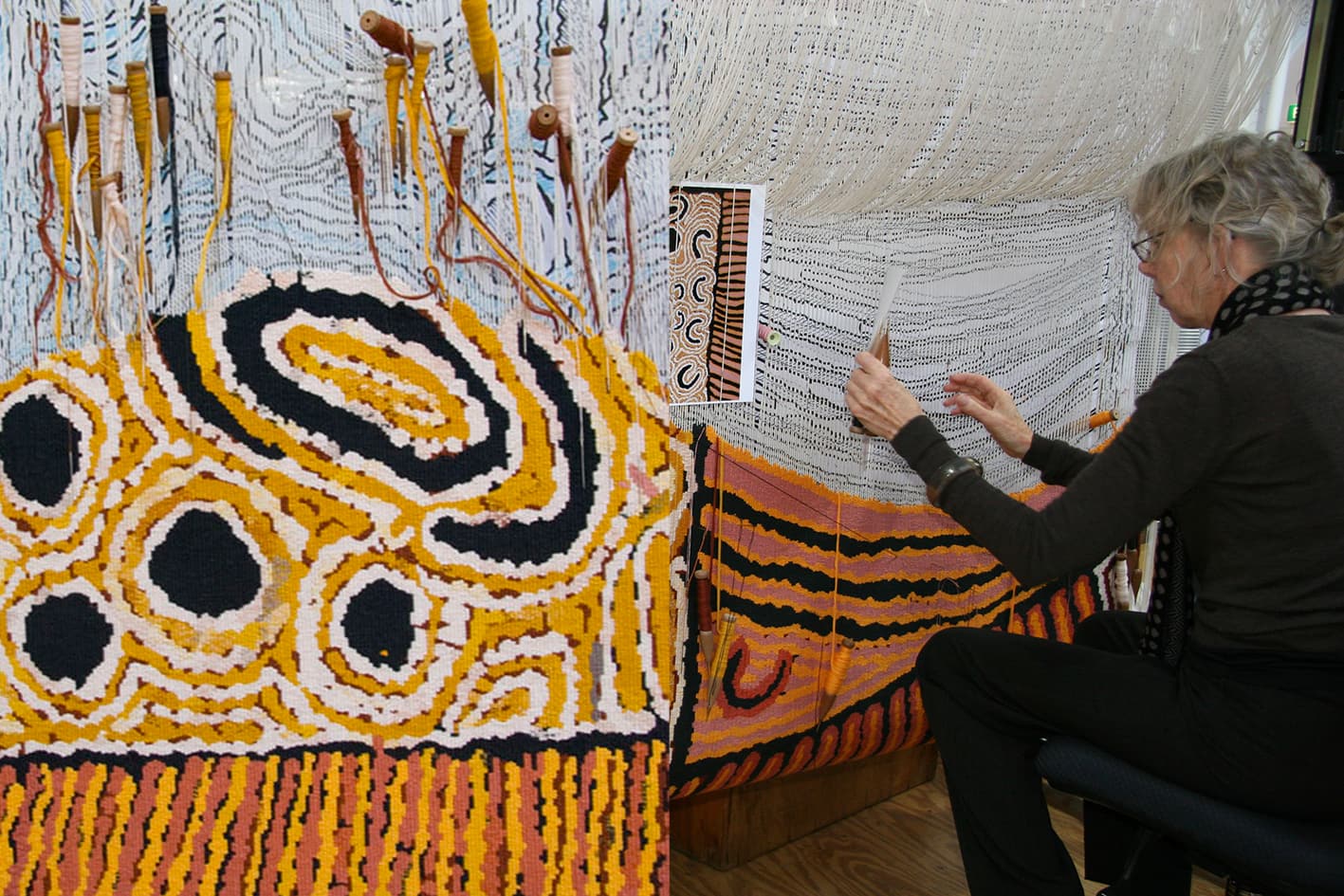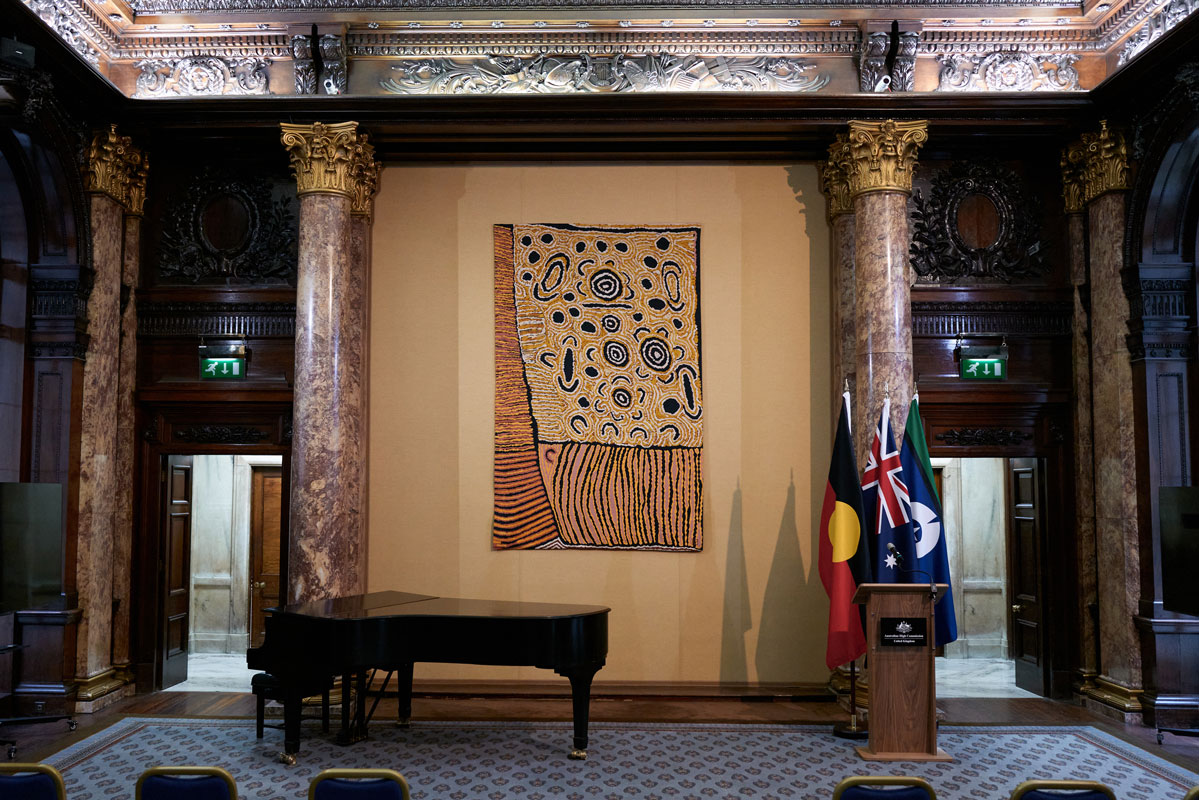




The design for Untitled (detail from Kiwirrkurra Women’s Painting) is a detail taken from a painting created by a group of seventeen women artists from the Kiwirrkurra community in Western Australia in 1999.
The detail selected for interpretation was painted by Nanyuma Napangati, who was assisted by Polly Brown Nangala. Napangati is of the Pintupi language group. Born in 1944, she is the sister of Charlie Tjapangati and is also related to Pinta Pinta Tjanpanangka and Kanya Tjapangati. She is a senior artist who has exhibited widely in Australia and overseas.
As with many indigenous works, the piece depicts locations, events, and relates a narrative depicting “designs associated with the rockhole and soakage water site of Marrapinti, west of the Kiwirrkurra community. A large group of women camped at this site.....While at the site the women made nose bones...which are worn through a hole made in the nose web..... The women later continued their travels......as they travelled they gathered edible berries known as ‘kamurarrpa' or bush raisin, which they ground into a paste to form a type of damper. [1]
The Western Desert (Pintupi/ Naami/ Ngaatjatjarra) artists traditionally occupied the Western Desert region and now live mostly at Kintore and Kiwirrkurra, close to the Northern Territory and West Australian borders. The painting that the design is taken from was produced for an art auction to raise money for dialysis treatment for those affected by kidney disease in communities in the Western Desert.
The original painting is very large, and belongs to private owners in Sydney. As the Workshop was not able to borrow the original painting, project leader Cheryl Thornton travelled to Sydney to see the work. Careful colour matching with our wool colour samples and pantone colour cards was undertaken and comprehensive photographs were taken to use as a reference for the weavers. The red / brown ground of the painting is an important aspect of the tapestry. The palette is limited with subtle accidental variations within each colour. Unlike some indigenous artists, Napangati's marks in the form of dots are not clear separate dots but are linked by dragging her brush from one dot to the next. These marks in themselves were a challenge for the weavers.
This tapestry is the fourth tapestry produced for the Embassy Collection and is currently on loan to the Australian High Commission in the UK, London. It was previously on display at the Australian High Commission in New Delhi.
Untitled (detail from Kiwirrkua Women’s Painting) was made possible by the support of the Department of Foreign Affairs and Trade and corporate and private donations through the Tapestry Foundation of Australia.
Nanyuma Napangati is represented by the Papunya Tula Artists.